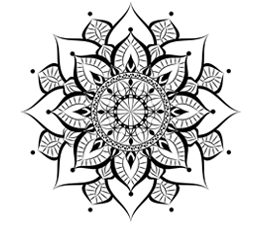My yoga journey started in pain – not through the painful and unrealistic poses, but for the present existence of physical pain in my life. From the desire and ambition to live pain-free life through yoga and meditation I changed my life completely- to living with pain and getting to know my body.
My professional life became ambition to help others realise the same and similar potential. From a girl that lived through painful episodes of migraines, epileptic fits and lumbar stenosis to a girl with full and embodied life, living in healthy balance between days that are good and days that are not so.
In Buddhist teachings, suffering may be explained as many things but physical pain possibly the easiest one that is known as true suffering and known to many of us. Recognition of suffering is a way towards understanding this suffering and realising the cessation of suffering. But is there a true cessation of suffering or is it just an acceptance and an encouragement towards the wellbeing. Buddhist teachers all say the noble path has to be lived in order to realise the well-being.
Through yoga and meditation, seeking guidance and support from friends and your teachers, it is possible to realise the wellbeing by understanding the causes of our suffering and our pain – and believe me this may be a long path. I am still on it. And many of you, I know are also there.
Painkillers on their own will not help us achieve this realisation. Yes, they help. But this is only a temporary solution and may usually mask the suffering itself. The true realisation happens with true and constant work and practice. With a complete dedication.
Buddha said: ”When something has come to be, we have to acknowledge its presence and look deeply into its nature. When we look deeply, we will discover the kind of nutriments that have helped it come to be and that continue to feed it.”
Four nutriments that can lead to our happiness are edible food, sense impressions, intention and consciousness.
What we eat and drink can bring mental or physical suffering. We must be able to distinguish what is healthy and what Is less so and what brings us harm. We need to practice Right View (Buddhist teachings) when we shop. The way we feed our body will lead to pleasure or pain. And both are considered sufferings. But which one will you choose?
The instant pleasure that later may turn into pain or the instant pain which may lead to a relative pleasure or rather a pain-free life.
Smoking, drinking, consuming toxins (this may be drugs, constant painkillers, unhealthy food, sweets etc), will harm us. And by doing all this we are eating our own lungs, liver, and heart. If we feed all of this to our children, we are inadvertently killing our children. And if this is a gruesome thought, IT REALLY IS. But think about it!
We have to look deeply as to how we grow our food, so we can preserve our wellbeing and minimise our suffering.
The second nutriment is the six senses – or our sense organs: eyes, ears, nose, tongue, body and mind (sight, sounds, smells, tastes, touch, ideas. Balancing these may become even more difficult. If you see it’s toxic, refuse to look at it. If you don’t like the sound of it, switch it off. Ingest only what you are certain is safe.
Balancing ambitions and full potential of being, touching on, understanding my suffering and realising the suffering and well-being is a long process. And it is a constant process. It’s become my life. It’s living with pain and still realising the well-being.
More on the nutriments and our path for well being next time.
To learn more about meditation or to improve your yoga and meditation practice, please visit our sangha page or contact us for more information.
#mindfullness #meditation #yoga #buddhistphilosophy



Leave A Comment